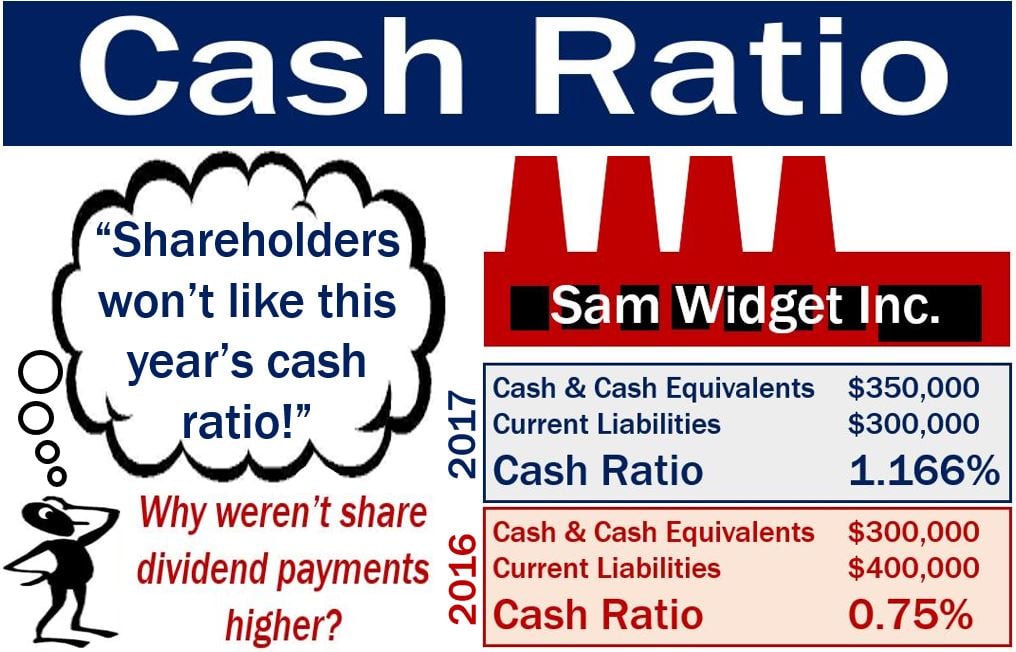The cash ratio, cash asset ratio, or cash coverage ratio measures a company’s ability to pay off its short-term debts. This measurement compares the total value of highly liquid assets to the amount in short-term liabilities. Highly liquid assets include cash and cash equivalents. In fact, it is one of many ways to measure a company’s liquidity.
We use the cash ratio when comparing a company to others. We also use it when comparing a company to the industry in general or its own past figures.
The cash ratio is a restrictive way of seeing whether a business can pay off its short-term debts. It is more restrictive than the quick ratio or current ratio. We can only include the most liquid portion of its assets in the formula. The quick ratio, on the other hand, also includes inventories in the mix.
Creditors monitor a business’ cash ratio closely. They need to determine whether it has enough of a cash balance to meet its current obligations as they come due. In other words, they need to know that a company can pay its bills on time.

Accounts receivable may take several weeks to collect, while inventory would take considerably longer to convert into cash. Accounts receivable refers to money that customers owe.
If a company suddenly had to meet all its short-term debts, only two things would matter. They would be its cash and cash equivalents.
Cash ratio formula
The cash ratio equals the cash and cash equivalents total divided by the current liabilities total.
Cash Ratio = Cash & Cash Equivalents ÷ Total Current Liabilities
Cash and cash equivalents appear on top of the current assets list. They appear on top because we list assets in order of liquidity. Cash equivalents are assets that we can turn into cash rapidly. In other words, we can cash them within 90 days.
Cash equivalents include money market funds, short-term government bonds, and Treasury bills. Marketable securities, foreign currency, and commercial paper are also cash equivalents.
Cash ratio – two examples
Example 1:
XYZ Inc. has $200,000 in cash, $250,000 in cash equivalents, and $450,000 in current liabilities.
XYZ’ cash ratio is 200,000 + 250,000 ÷ 450,000 = 1
With a cash ratio of 1, XYZ could pay off its short-term debts today. In fact, it could use its cash and cash equivalents to pay off those debts.
Example 2:
BCAMM Ltd. has ₤250,000 in cash, ₤100,000 in cash equivalents, and ₤700,000 in current liabilities.
BCAMM’s cash ratio is 250,000 + 100,000 ÷ 700,000 = 0.5
With a cash ratio of 0.5, BCAMM could not pay off its current liabilities today. Its cash and cash equivalents would not be enough.
Put simply, a ratio of 1 or greater means a company could pay off its current liabilities from cash and cash equivalents. However, a ratio of less than 1 means it couldn’t.
Experts say a ratio of more than one usually means a company is not using its cash efficiently. In other words, it should look for uses for the excess cash. One option would be to pay it out to shareholders in the form of dividends.
